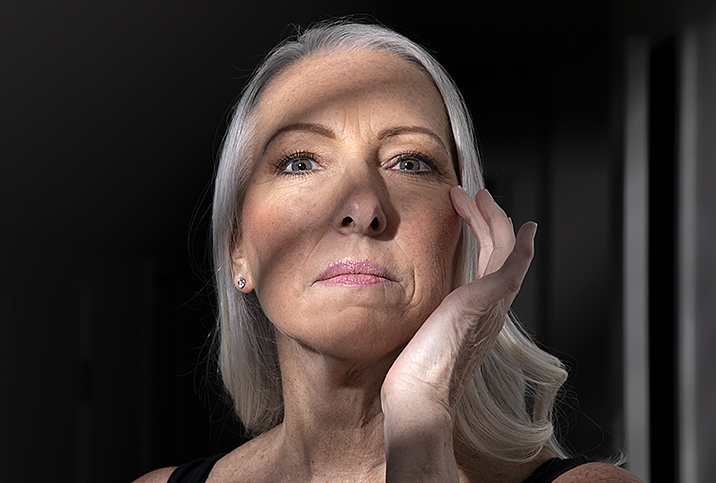Not All Hormone Therapies Are Created Equal

During menopause, 85 percent of women experience uncomfortable symptoms, such as hot flashes, vaginal dryness, painful sex and insomnia. Many women seek treatment options for these issues as their ovaries discontinue the production of estrogen and progesterone.
One of the most well-known treatments for these types of symptoms is menopausal hormone therapy (MHT), also known as hormone replacement therapy (HRT). But not all forms of hormone therapy are created equal.
Conventional MHT
The traditional menopausal hormone therapies comprise either estrogen taken alone in a pill, patch, cream, gel, spray or vaginal ring, or a combination of estrogen and progesterone/progestin known as EPT.
The first manufacturing of MHTs began in the late 1800s with the drug Ovariin. In the 1900s came Emmenin, which was extracted from placentas. This was replaced by the commercial production of Premarin (pregnant-mare-urine) in 1939. By 1992, Premarin had become the number one prescribed drug in the United States.
Due to an increase in endometrial cancer in postmenopausal women taking estrogen, progestin was added to the standard MHT in the mid-1980s to reduce this risk. This combination was very popular and worked well to ease many menopausal symptoms.
However, in 2002, the Women's Health Initiative (WHI) published its findings on the adverse effects of MHT. The studies found hormone therapy increased the risk of cardiovascular disease, breast cancer and stroke. After the publication of WHI's three long-term studies, many doctors reassessed how they prescribed MHT, and many women opted not to take hormone therapies during menopause.
Since 2002, doctors and researchers have worked to better understand how to administer MHT without compromising women's health. The Food and Drug Administration now recommends that women take a shorter course and lower dose of MHT. For many women, the benefits outweigh the risks of a temporary course of MHT. This is good news for menopausal women looking for help to ease vasomotor symptoms, vaginal issues and sexual dysfunction.
Better still, today, there are more hormone therapy options available.
Alternatives to traditional MHT
Like traditional MHT, bioidentical hormones and custom-compounded bioidentical hormone therapies (CBHT) are manufactured in laboratories and/or pharmacies. These therapies carry the same health risks as MHT and are usually prescribed by a doctor, though there are some bioidentical hormones that can be purchased over the counter.
Bioidentical hormone therapies (BHT) are just like synthetic hormones, but they are derived from plants structurally identical to what your body makes, explained Anna Camille Moreno, D.O., a certified menopause practitioner with Duke Health in North Carolina.
"I prescribe and counsel women on FDA-approved bioidentical menopausal hormone therapy, such as estradiol pills, patches, gels, sprays [and the] vaginal ring," Moreno said. "The only bioidentical progestogen is oral micronized progesterone."
Bioidentical hormones are produced the same way as other manufactured drugs, explained Loyd V. Allen Jr., Ph.D., R.Ph., the editor-in-chief of the International Journal of Pharmaceutical Compounding and professor emeritus of the University of Oklahoma College of Pharmacy.
"The estradiol or progesterone or testosterone...must be chemically synthesized...either starting by combining appropriate chemicals to actually form the drug structure or, in many cases, they can be prepared from precursors that may be present in some form," Allen said. "In some cases, a precursor can be obtained from yams and then the precursor [is] further chemically modified to come up with a specific hormone that is being prepared."
Once the drug is produced, it must meet the standards of the U.S. Pharmacopeia (USP) to be used in the United States, as well as in many countries throughout the world, Allen added.
The specifics of custom-compounded bioidentical hormones
It's important to understand that custom-compounded bioidentical hormones, unlike traditional MHT and some bioidentical hormones, are not FDA-approved. Generally, anything that the FDA has not approved specifically is an unapproved drug product in the U.S., Allen explained.
"Since compounded preparations are individualized for each patient, they are not individually approved by the FDA because that's obviously...not feasible," he said. "There are literally tens to hundreds of thousands of different compounded preparations made every day, and obviously, if it takes the FDA a number of years to approve each one, that is just totally unworkable."
Moreno cautioned that there are some serious drawbacks to custom-compounded bioidentical hormones. She explained that a woman's health risks are greater with unregulated, unapproved bioidentical hormone therapy.
"Using this regimen can lead to supraphysiologic levels of hormones in the blood, [for example], testosterone pellet injections can lead to high levels of blood testosterone that can lead to hirsutism, acne, clitoromegaly and abnormal heart rhythms," Moreno explained.
On the other hand, custom-compounding hormones allow doctors to customize treatment plans for women, especially those who have had hormone sensitivities or side effects to FDA-approved menopausal hormonal options, she continued.
The most important concern about custom-compounded hormones is that the doses can have a lot of variability due to the following factors:
- Batch-to-batch inconsistencies
- The prescriber adjusting doses based on hormone levels
- Differences in absorption based on the carrier used
- Route of delivery
A person receiving estrogen needs a sufficient dose of progesterone/progestin to prevent endometrial cancer. Without reliable dosing of progesterone, a doctor won't know if their patient is getting enough to prevent cancer. This is why nonstandard dosing leads to increased cancer risk.
Due to these serious risks, the decision to prescribe CBHT needs to be medically justified, and patient preference alone is not a reason to use these products, Moreno said.
Insight into compounding pharmacies
Once a physician places an order for a specific patient, the pharmacist proceeds to compound or prepare that individual prescription, Allen explained.
"The pharmacy has dedicated equipment, ingredients and trained personnel in order to do this accurately and safely," Allen said.
Compounding pharmacies and the compounded preparations they create must meet the requirements of the individual state boards of pharmacy, which basically enforce the standards of the USP, Allen stated.
"The USP has standards for drug products, compounded preparations, the facilities where the compounding occurs, for personnel and procedures, and anything that is related to a drug product," he continued. "Compounded preparations [must] meet the USP standards, which are the same or similar standards that the FDA enforces for the manufacturers of manufactured products."
However, the FDA's manufacturing guidelines are not the same as its approval process for medications.
Meeting FDA and USP standards for manufacturing mean the compound contains the ingredients the manufacturer says it contains in the amounts it states, that there aren't harmful contaminants, that it will break down in the body in a specified amount of time, and that it is manufactured in a sanitary, well-controlled environment.
But those guidelines do not require manufacturers to prove anything about the safety or efficacy of the product, which is what FDA approval provides.
Following the latest medical guidelines for CBHT
In July 2020, the National Academy of Sciences, Engineering and Medicine issued a report on the clinical utility of compounded bioidentical hormone therapy, Moreno noted.
The report included the following recommendations:
- Prescribers should restrict the use of compounded BHT to certain situations, such as for people with allergies, unavailable dosages in FDA-approved treatment options, or testosterone for women with sexual dysfunction.
- Improve education for prescribers and pharmacists who market, prescribe, compound and dispense compounded BHT.
- Expand and improve oversight and review of compounding pharmacies.
- Strengthen and expand the evidence based on safety, effectiveness and use of compounded BHT preparations.
In review
As always, the best starting point is talking with your doctor and/or menopausal specialist about your menopause symptoms and creating a plan that may or may not include MHT or bioidentical hormone options.
To find a menopause specialist in your area, visit the North American Menopause Society website. For more information about compounding pharmacies, visit the American Pharmacists Association website.




















